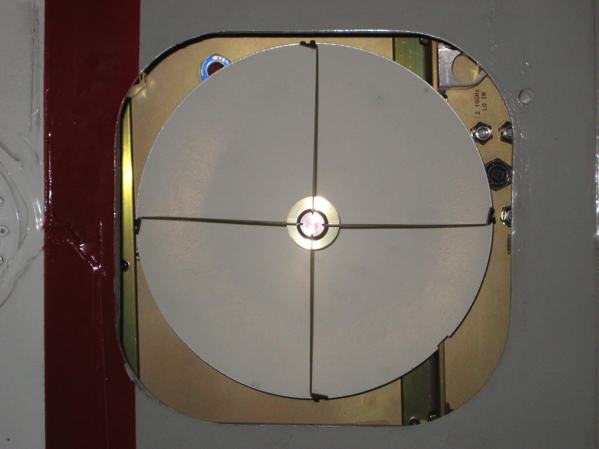
Figure 1. Upper panel: View of W-Band antenna from the port on the bottom
of the aircraft prior to installation of the window; lower panel, Radar
hardware in the P-3 cabin (left, blue frame)
| Aircraft Commander | Mark Sweeney |
| Co-pilot | Pat Didier |
| Navigator | Tim Gallagher |
| Flight Engineer | Joe Klippel |
| Flight Director | Jack Parrish |
| Flight Director | Richard Henning |
| Data Technician | <Dana Naeher |
| AVAPS | td align=left>Todd Richards|
| Electronics Technician | James Warnecke |
| Electronics Technician | Joe Greene |
| Radar Technician | Ken Moran (ESRL) |
| Radar Technician | Sergio Pezoa (ESRL) |
Background:

The PSD W-band radar was installed on the NOAA WP-3 NRF43 in late July, 2013 (Fig. 1). A test flight was made on July 29. The flight track was West of Tampa with most observations taking place 1700-1859 GMT. Initial altitude was about 3.6 km then at 1817 decreased to 2.0 km (see Fig. 2 and 3). A series of circles were made with the aircraft rolled over at 10, 15, or 20 deg. Most of the data were ±10° roll.
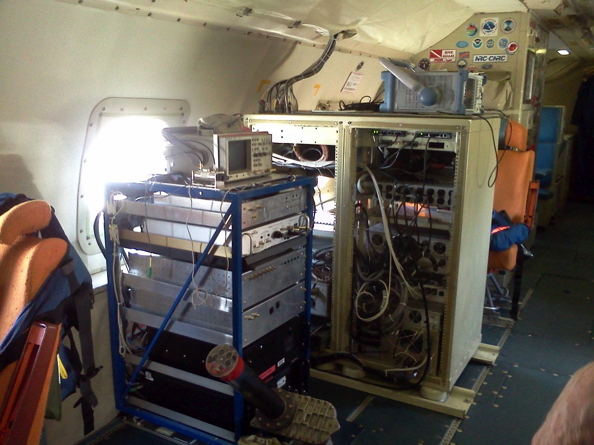

Radar Settings:
The radar was operated in two modes but only the basic mode data are shown here. The second mode had problems and was not usable.
Sample Return Data:
The simplest visual display of the radar data is a time-height cross section of the 3 moments (Fig. 4). The return from the ocean surface is apparent as the bright region at a range of 3.6 km initially then decreasing to 2.0 km. The surface return occurs at a range equal to the aircraft altitude when the radar is nadir pointing. When the radar is off-nadir, the range is given by Rng=Altitude/Cos(Θ).
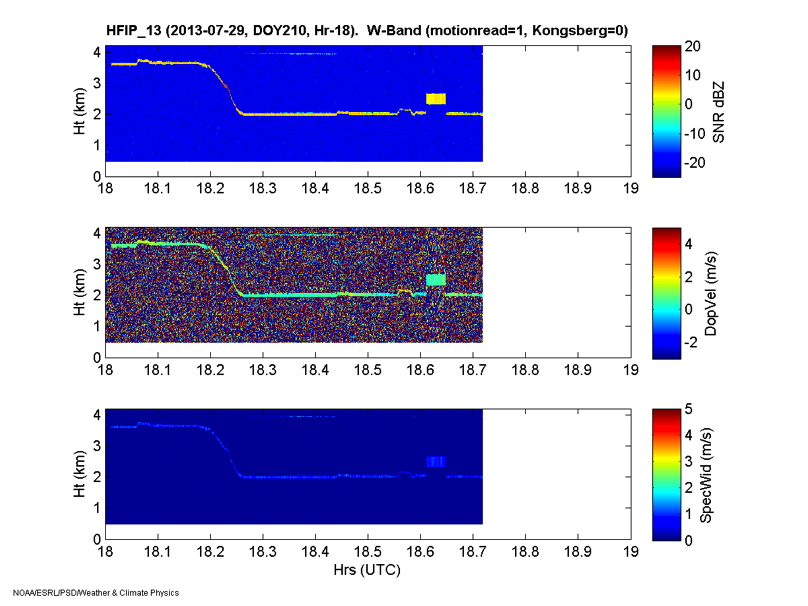
An example of a single reflectivity profile is shown in Fig. 5; the peak of the surface return is visible at about 2.1 km range; peak value is close to 50 dBZ. We have processed the time series to find the range and the dBZ value corresponding to the maximum return for the entire record. From the P3 navigation data, we also know the altitude and the pitch/roll of the aircraft. Figure 6 shows a plot of Range-Altitude compared to Altitude(1/Cos(Θ)-1). This suggests that the radar range accuracy is within 1 range bin.

Processing for Radar Surface Cross-section:
The antenna PSD radar has an absolute calibration and with careful
determination of losses in the system the absolute reflectivity accuracy is
good. We assume that the surface cross-section,σ0, is related
to the reflectivity, η , via
where Z is the reflectivity factor and 180 converts conventional dBZ from
mm6/m3 unit to m3. Using (1) we can convert
to normalized radar cross-section (NRCS)
The corrects are 1.6 dB for the 2-way window attenuation and 4.2 dB for
2-way atmospheric water vapor absorption at 2 km altitude. The final result is
Cross-section and NRCS results:
The time series of surface return information has been analyzed for various aspects of the radar performance. A simple depiction is NRCS vs the tilt angle of the incident beam (assumed to the aircraft roll angle). Fig. 7 shows a plot of data from the 2.0 km runs, where several roll angles were maintained for periods on the order of a few minutes.
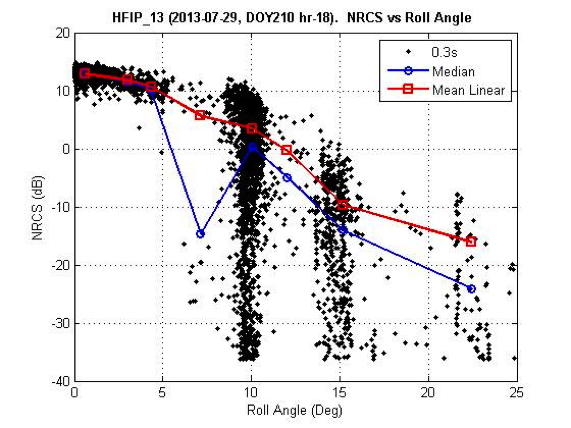
The black dots are the individual NRCS values (3 Hz); the red symbols are averages of σ0 from (1) that are then expressed in dB. These results are similar to those of Li et al. (2005). The rapid decrease with angle suggest light winds (on the order of 2-3 m/s), which is crudely consistent with flight-level measurements. There are several models of the surface roughness (optical to radar) as a function of angle. The models generally express the angular dependence as approximately [tan(Θ)] -2 reasonably near nadir. A fit of our data to [tan(Θ)] -2 is quite good and comparable to Li et als. (2005) results.
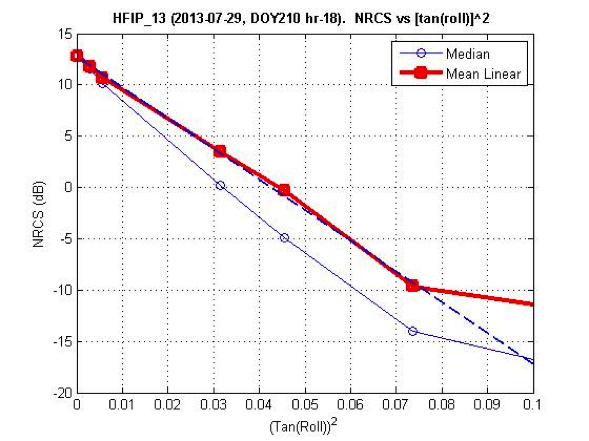

Fig. 9 shows values of the surface Doppler velocity divided by the sin(Θ) for angles exceeding 5 deg. At constant altitude, the motion of the aircraft normal to the aircraft horizontal axis is negligible relative to the air. Since the aircraft is executing a fixed angle turn, the interpretation is the observed Doppler is due to the mean motion vector of the air at flight level relative to surface. In this case, a net wind-surface current motion of about 3.5 m/s from about 180 deg (southerly). In other words, flight level wind speed is about 3.5 m/s.
| Take off | Landing
| MacDill AFB, FL | 16:57 UTC
| MacDill AFB, FL | 19:25 UTC
| | ||
1 dropsonde was deployed, it was good and its data sent.
Mission Data :
serial |
Flight Director's form |
Flight Director's log